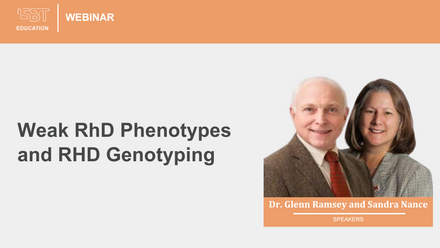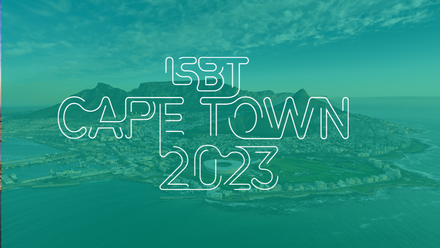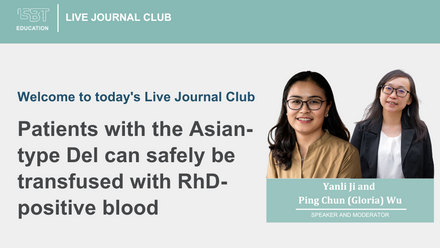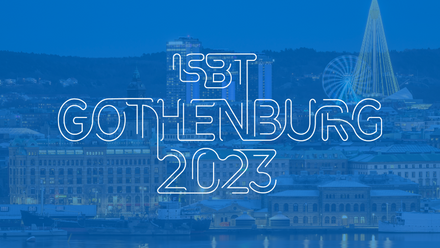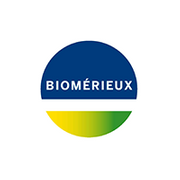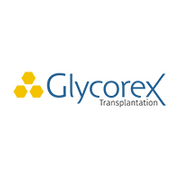The Fetal Maternal Immunology session included the following presentations:
1. Cecile Toly-Ndour: Rh disease prevention for women with partial D: is routine antenatal anti-D prophylaxis useful?
2. Mees Bruin: Natural course of pregnancies with alloantibodies against human platelet antigen HPA-1a
3. Renske van 't Oever: Natural course of hemolytic disease of the fetus and newborn after pregnancy with intrauterine transfusions
4. Jonas Lowack: HLA class I antigen knock out endothelial cells, a tool for the detection of endothelial-specific anti-HPA-1a alloantibodies
5. Xueyu Jiang: Pre-administration of baicalin inhibits red blood cell immunization in a mouse model of red blood cell transfusion
6. Ellen van der Schoot: Fetal RHD genotyping by droplet digital PCR for D variant mothers or children
MODERATORS: Agneta Wikman, Alan Lazarus
After the presentation, there was a questions and answers session, which is also included in the recording.
Abstract
Natural course of haemolytic disease of the foetus and newborn after pregnancy with intrauterine transfusions
R van 't Oever1,2, C Zwiers1, D Oepkes1, E Lopriore3, M de Haas2,4, J Verweij1
1Obstetrics, Leiden University Medical Center, Leiden, 2Immunohematology, Sanquin, Amsterdam, 3Neonatology, 4Immunohematology and Blood Transfusion, Leiden University Medical Center, Leiden, Netherlands
Background: Haemolytic disease of the foetus and newborn (HDFN) is generally considered to worsen with each subsequent pregnancy with an antigen positive foetus. We found no adequately sized studies quantifying the risk of severe HDFN in pregnancies following a foregoing pregnancy in which treatment with intrauterine transfusions (IUT) to the foetus was necessary.
Aims: The aim of this study was to assess the likelihood of recurrence of the necessity of IUTs in a subsequent pregnancy with an antigen-positive foetus, if in an earlier pregnancy at least one IUT was given because of HDFN. As secondary outcome we assessed the interval between the gestational age (GA) at first IUT in the first immunised pregnancy and first IUT in the subsequent pregnancy with need for IUTs.
Methods: We constructed a database of all pregnancies complicated with RhD and K alloimmunization and at risk for HDFN from 1999 until 2017 and registered if IUT treatment was given. Of all women that received one or more IUTs, we assessed the need for IUT in a next pregnancy with an antigen-positive fetus.
Results: During the study period 331 women were treated with IUTs for RhD or K mediated HDFN, of which 18% had a subsequent pregnancy with an antigen positive foetus. If in a foregoing pregnancy an IUT was given for HDFN, there was a risk for recurrence of the need of IUT(s) treatment in a subsequent pregnancy with an antigen positive foetus in 91% (53/58) of cases. This concerned all pregnancies women (n = 14) treated with IUT before 25 weeks of gestation. Characteristics of the group of 53 women with recurrent IUTs versus the five women without an IUT in the subsequent pregnancy were: a lower gestational age at the first IUT in the first immunised pregnancy (28 vs. 32 weeks), a higher percentage of foetuses with hydrops (13% vs. 0%) and more IUTs per pregnancy (3 vs. 1.5).
If in a subsequent pregnancy an IUT was needed, the gestational age was a median of 5 weeks earlier at first IUT than in the foregoing pregnancy (23 weeks, range 16–34 vs. 28 weeks, range 16–35 respectively). However, the range in this interval was quite large (−13–10).
Summary/Conclusions: This study is the first to report on the natural course of HDFN after a pregnancy complicated by IUT. A high risk of recurrent need for IUT at a lower gestational age was observed for the majority of women. For women with a history of IUT and their caregivers, this information is essential to enable adequate preconceptional counselling and identification of high risk patients.

